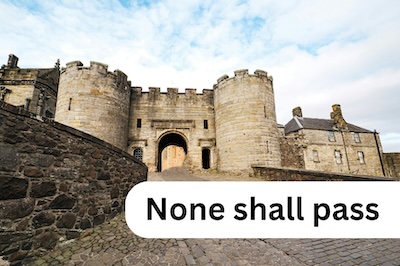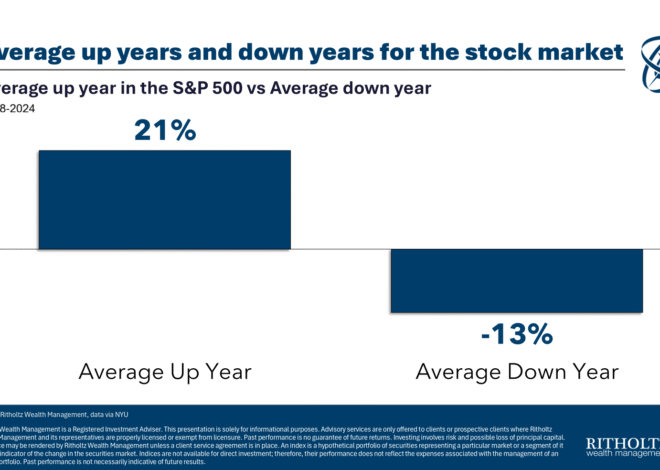They promised us flying cars. We got passwords to do our shopping. But given that secure, random, and frequently updated passwords are now the cornerstone of keeping our financial assets safe, Monevator contributor The Realist makes the case for using a password manager to wrangle them…
Nearly every aspect of our lives in today’s digital world requires a login. As a result the average person juggles dozens of online accounts. (And that’s before they’ve even gotten into stoozing…)
Count how many times a day you’re asked for some kind of account details – from reading the FT to ordering a pizza to checking your ISA. The answer might surprise you.
The challenge: how to remember all the passwords we need just to get through the day and keep on top of our financial affairs.
Common solutions include writing them down or making them all the same.
Neither stacks up in 2025. They weren’t good solutions in 2005, to be honest.
One password to rule them all
If you still rely on Post-it notes stuck to your printer, then you need a password manager. They are the best way to generate robust passwords that guard you against identify theft and financial cyber crime.
Completely random passwords will always be far stronger than those you come up with off the top of your head, or that resurrect the fading memory a childhood pet.
Password-cracking programs try all the common passwords first. They then use repeated passwords found elsewhere across the internet. You need something special to ward them off.
Enter the password manager
As password manager is a piece of software that securely stores – and often also creates – unique random passwords for your online accounts.
The password manager enables access to this encrypted database of all your passwords via a single ‘master password’, or biometrics if available on your device.
Most managers also include a browser extension that enables secure autofill logins online to save you time.
Don’t panic if those two sentences have already brought on the cold sweat of techno-fear! It’s simple once you take the first step. Good software will walk you through the process.
Obey your master
The master password is your gateway key. It’s the only password that you will need to remember. You’ll use it a lot so familiarity will help.
The best tip for an effective master password is to use a passphrase.
Brute force cyber attacks involve a trial-and-error approach until an account is compromised. A longer password – or phrase – gives a higher level of defence.
One method for creating a master password you will remember is:
- Group three words together
- Separate each word with a special character
- Add a number
- Then replace letters with more special characters to increase randomness.
For example, simply using items I can see from where I’m sat writing I can devise:
- Lamp$had3=paint!ng@c0ffee94
[Um, where does the remembering hack come in? – Ed]
What’s in a (pass)word?
Password managers can store more than just passwords. Sophisticated password managers can safely store all kinds of information.
Think passport details, driver’s licence, insurance certificates – anything you might require on or offline, stored safely so you don’t need to have the document with you.
The benefits can be significant.
For instance, imagine being contacted regarding a suspicious transaction on some account you rarely use, whilst you’re away on holiday.
It could be a scam. But at a minimum, a password manager would enable you to log-in and check an account when you can’t even remember what username you used to set it up. Then, if necessary, you could generate, update, and store a new strong password – all from the comfort of your sun lounger.
Another idea: you could save the emergency contact details of financial organisations together with your account numbers in advance for quick access when you’ve no paperwork to hand.
Most password managers have toggles to include (or not) CAPITALS, $pec!al characters, or numb3rs – as well as the ability to choose a password length to fit the requirements of the account in question.
Password managers can also make routine changing or resetting passwords a breeze.
Some password managers will even warn you of a known data breach on a third-party website where you have an account. You can then reset your passwords with a button click. You can also choose to change all your passwords periodically for optimal security.
Advanced apps such as 1Password can do much more than just remember passwords.
Modern bank robbers carry laptops, not balaclavas.
But by centralising and safeguarding your login credentials, you can protect your data, save time, and enjoy more peace of mind.
Using a quality password manager is like the digital security equivalent of a passive index fund investment. Fit and forget, and then it’s doing its thing in the background, 365 days a year.
There’s an app for that
Even my toothbrush now ‘requires’ me to use an associated app. It gets tedious.
But a password manager app really is one to take a look at, download, and use. It will enable the seamless syncing of all your passwords and data across any device, and allow you to login at the touch of a button or a scan of your face.
There are countless options available. I’m in no position to debate the pros and cons of each. Plenty of tech blogs out there review them if you wish to dig in.
Personally, I use 1Password and have done for years. It’s a paid service but for me it’s been flawless.
One consideration is that – similar to switching from iPhone to Android – once you go down a road you’re semi-locked into that system. Yes you can change, but the data porting may come with some pain. (Apparently 1Password enables you to import passwords from other managers, but I’ve not tested this myself).
In researching this article, I’ve noticed I’ve a mind-blowing 219 logins stored within 1Password. The sites covered range from financial services to online stores I visited years ago to old magazine subscriptions I no longer use (but where my personal data is likely still out there.)
Another good option is Keychain, Apple’s own password manager. It’s integrated for free within MacOS and iOS. Keychain is a great option and seamless in use. The drawback is it’s limited to Apple devices.
Google has a similar one for Android though, and Microsoft offers the same for its Edge browser.
Searching for freebies
There are also many free open-source options available. (Let us have your recommendations in the comments!)
Personally, I would rather pay a small fee and have some come-back for such a critical piece of software. But many people do use free versions without issues.
The best one for you is the one that suits you. This will come down to a function of pricing, features, interface, and usability. Some password managers offer a free trial, so check to see if you can try before you buy.
I’ve listed a few popular options below, but this is by no means exhaustive:
Look out for a manager that supports Multi-Factor Authentication (MFA).
As you’ll probably know from using it already – even if the actual acronym has so far escaped you – MFA is an electronic security method where you must provide two or more distinct types of verification to gain access to a resource, such as a website or application.
You should always use MFA where you can. It adds an extra layer of protection to the first-line defence afforded by a password.
QWERTY1234
There is usually a buy-in period with learning any new tool. Password managers are no different.
The initial set-up can take a bit if time, particularly if all your passwords need changing from Hurst66 to ZbP=!pziAJx2v4efc4V7J.
But once you’re done, ongoing maintenance is easy.
Many password managers will prompt you to save passwords when you first log into sites online. This way you can steadily change them as you come to use them.
That’s particularly handy with some of the less frequently used logins, such as pension accounts where you may not have daily, weekly, or even monthly interactions. [Um, speak for yourself – Ed]
Securing your financial future
In an age where cyberattacks are increasingly sophisticated, password management is no longer optional. It is essential to protect your personal and financial data.
If your preferred method is a little black book that’s locked in a safe, then fine. As I said above, the best password manager is the one that works for you.
But you should still change your passwords regularly. Keep them random and don’t use the same one for Tesco that you use for your online broker.
Like it or not, our lives are becoming more digitalised. For starters, you are reading this on a digital platform.
But password management software is designed to work with you, not against you, and today’s tools offer a blend of convenience and security that manual methods simply cannot match.
Further reading:








